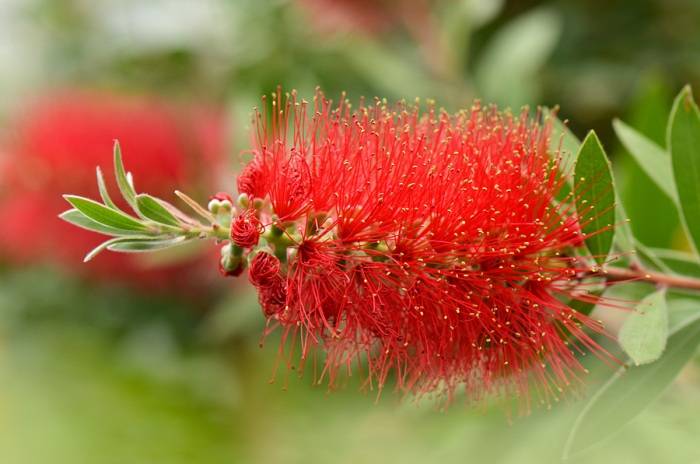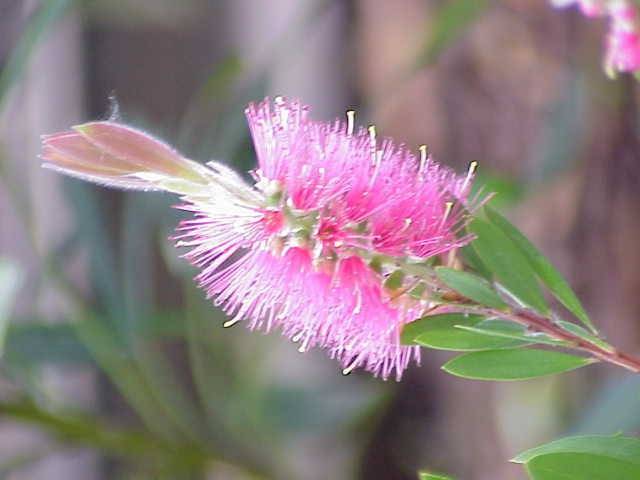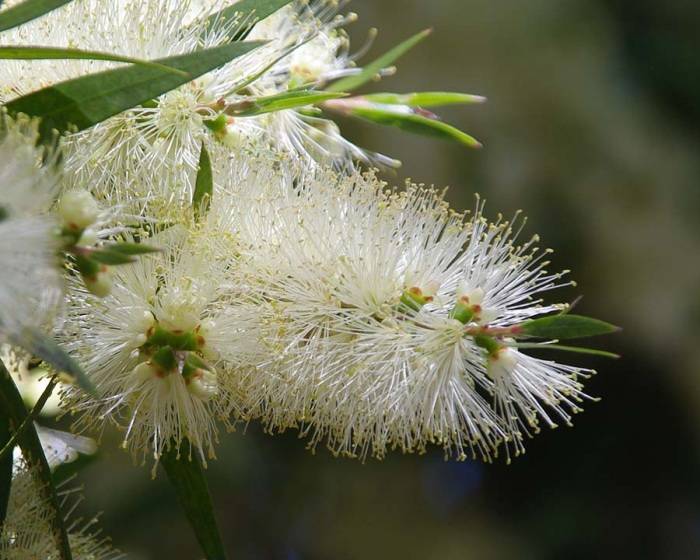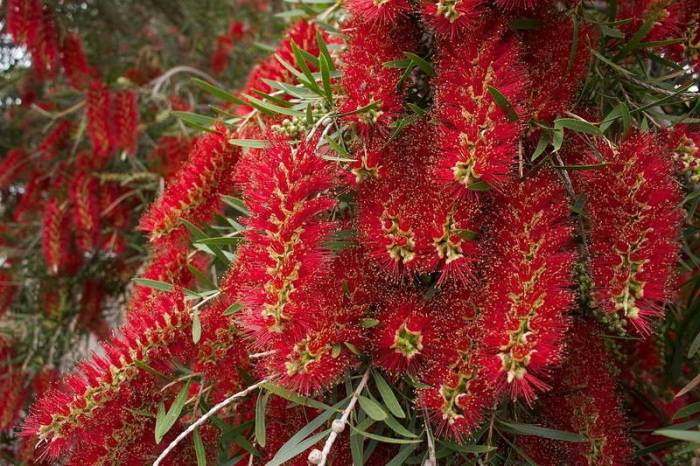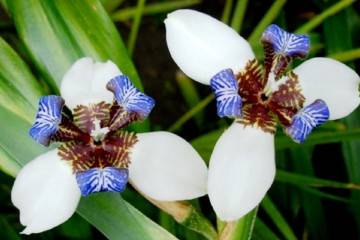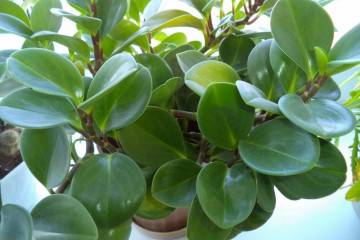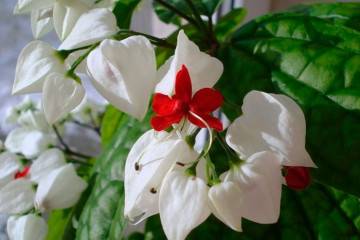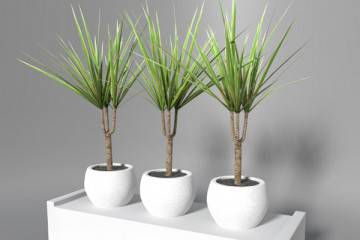Callistemon lemon: home care examples
Content:
Callistemon citrinus (lemon callistemon) can be grown both as a garden plant and as a houseplant. He has very unusual inflorescences, with many bright long stamens, reminiscent of bottle brushes. In the literature, you can find other names for this plant: "beautifully grained" (translated from the Greek kallos - beautiful, stemon - stamen), "Bengal candles", "many stamens", "red stamens". Callistemon is easy to grow, it is planted by both experienced and novice growers. The rules of agricultural technology will be discussed below.
Main types
Callistemon is an evergreen shrub native to New Caledonia (Australia). Belongs to the Myrtle family. The first scientific description was given by the English naturalist Joseph Banks in 1789. The first callistemon brought from New Caledonia "settled" in the Royal Botanic Gardens.
In the natural environment, individual specimens can reach a height of 15 m. In the garden and at home, the sizes are more modest, from 50 cm to 1.5 m. The inflorescences are dense. The flower petals are practically absent. Stamens in flowers are much brighter than petals. They are fuchsia, scarlet, yellow, coral, orange, light green, white and creamy. The length of the inflorescences can reach 13 cm, the diameter is up to 6 cm.
The leaves are narrow, with a sharp edge like a blade. Therefore, you need to be careful if there are children and pets, they can injure themselves on the edge of the platinum sheet. The color of the leaves is light green, with a grayish tint.
In nature, 37 species grow, but only 3 are well "domesticated":
- Callistemon lemon.
- Callistemon is rod-shaped.
- Callistemon red.
A little more about them below.
Callistemon lemon
The most popular representative of the species for home cultivation. The scent of the essential oils produced by the leaves is reminiscent of ripe lemon. This is reflected in the title.
The leaves are large, up to 10 cm long, the stamens are colored in different shades of pink, purple and white. Blossom prefers to bloom in July.
The following varieties of this flower can be found in indoor plant stores:
- Mauve Mist - "Bengal candles" are painted in lilac color.
- Reeves Pink - with pale pink stamens.
- White Anzac - with beautiful white inflorescences.
- Devens Rowena is a multi-stalk plant with a smooth transition from red to bright pink. Wilted inflorescences of a pale pink color.
Callistemon rod-shaped
A medium-sized representative of beautiful lanceolums, the maximum height in nature is 7 m. The leaves are small, up to 5 cm in length, lanceolate, with a sharp edge.
The stamens are bright red with burgundy anthers. Flowering begins in June. The inflorescences are dense, the bush is literally strewn with them. This flower is also called braided callistemon.
This variety of red grass grows well in indoor conditions, forming a dense bush up to 1 m high.Even a busy person can take care of this flower.
For reference: Captain Cook is most often chosen for home breeding and grown.
Callistemon red
Another interesting flower is Callistemon coccineus.
Spectacular variety with bicolor stamens. The main part of the stamen is deep scarlet, and the anther is greenish-yellow.
Callistemon red grows well in the garden, outdoors.
Callistemon: home care
Callistemon flower does not require special attention or care. In addition to unpretentiousness, another plus of growing callistemon is the release of phytoncides, which effectively fight pathogens in the air.
In the natural environment, fruits are formed on the bush in the fall. Under indoor conditions, the fruits do not ripen, since the plant is not pollinated. In nature, callistemon pollen is transferred from a bush to a bird bush.
Lighting
At home or in the garden, all varieties of "Bengal candles" are planted in a well-lit place. Indoor plant grows well on southern windows with direct light. You need to protect from the sun only at midday in the summer. With a constant presence, even in a light shade, the red stalk will not bloom.
In the summer, even a houseplant is best taken out into the fresh air, into the garden. The place for installing the pot with callistemon should not be in a draft.
Watering
The soil in which the callistemon grows should not dry out. But it is also impossible to turn it into a swamp, the plant does not tolerate stagnant moisture. Many novice flower growers mistakenly believe that if the leaves of the callistemon begin to dry out, it is necessary to water it more abundantly. But this is not the case. Drying leaves on this plant means it has been flooded.
In winter, the plant begins a dormant period, so watering should be reduced. It is not recommended to completely abandon watering.
To avoid the problems associated with over-watering, you must regularly drain the water from the sump. Ideally, this should be done 15-20 minutes after the soil has been moistened.
In the summer, regular spraying is required. During the heating season, callistemon will also not mind humidifying the air around it, since excessively dry air contributes to the defeat of the plant by spider mites.
Top dressing
The red-grass plant loves complex fertilizers on an organic basis. Lime is harmful to callistemon. During the active growing season, from spring to autumn, fertilize often, 2 times a month. In winter, feeding is not done more often than once a month. With excessive feeding, the leaves will dry out and fall off.
Pruning
For a callistemon, care consists not only in watering and feeding, but also in regular pruning. If this is not done, then the shoots are long, thin and weak. The decorativeness of the bush is greatly reduced, since inflorescences do not form on the weakened branches.
The peculiarities of the shoots of the mnogomechanin do not allow pinching. Only cropping is possible.
- Before flowering, planned pruning is never done. It is only possible to remove shoots affected by pests when there is no other way to deal with them.
- After flowering, the branches are cut off by about 20 cm.
Trimming is done with a pruner or a sharp knife, previously disinfected in a solution of potassium permanganate. You can heat the instrument over a gas burner or treat it with an alcohol-based preparation (for example, hand sanitizer).
Pruning stimulates the emergence of new branches to form a beautiful crown.
Temperature
Callistemon tolerates heat well, but not frost. The minimum temperature that is permissible for this flower is 6 degrees Celsius. Otherwise, it will not bloom next year, or it will die altogether. Therefore, callistemons growing in the open field must either be covered or transferred to the greenhouse altogether.
The ideal temperature for a rest period is no more than 15 degrees Celsius.For the period of active vegetation, the optimum is + 20 ... + 22 ° C.
Plant transplant
Adult Callistemon specimens do not need to be repotted frequently. A complete soil change is possible every three years. Only the top layer of the soil changes annually. The pot for planting callistemon should not be too spacious. For the summer, it can be transplanted into open ground. In the fall, the breeder again "moves" into a house or a greenhouse.
From the store's assortment of soils, soil for aroid is suitable. When self-compiling, the soil adhere to the following proportions:
- 2/5 peat;
- 2/5 leafy land;
- 1/5 river sand.
Drainage, for example, perlite, is poured into the bottom of the pot to drain excess water. You can not plant a beautiful grass plant in a flower pot without a drainage hole.
The multi-stalk plant is transplanted in early spring or immediately after flowering - in early autumn.
Reproduction methods
Callistemon flower can propagate in two main ways: cuttings and seeds.
Seeds
Growing callistemon from seeds is done in the above mixture (peat + sand + leafy earth).
The soil is well moistened before sowing. The seeds are laid out on the ground. The distance between the seeds is at least 2-3 cm. Sprinkle on top with a thin layer of earth. The planter with planting material is covered with foil or glass and placed in a bright place.
Every day you need to moisten the soil and ventilate. When sprouts appear, the "shelter" is removed. Young plants are transplanted when 4 true leaves appear.
Cuttings
A more popular breeding method for callistemon.
Cuttings are made in spring. This will require a sanitized, sharp knife or pruner. The cut is made at an angle. The stalk should be 6-8 cm long. In order for the stalk to germinate faster, it is treated with a preparation for rooting.
Cut shoots are planted under a glass cover or under a film. The temperature is maintained around + 22 ... + 24 ° C. Good illumination is required for germination.
Mnogomechanik is an unpretentious, interesting plant. Subject to the rules of care, the plant will delight the owner with bright flowering for many years. Reproduction of callistemon is also not difficult.
